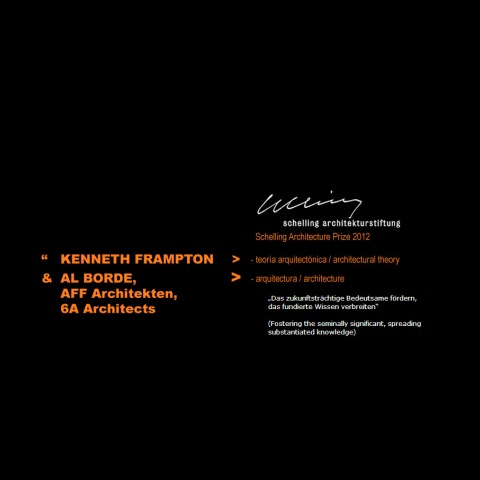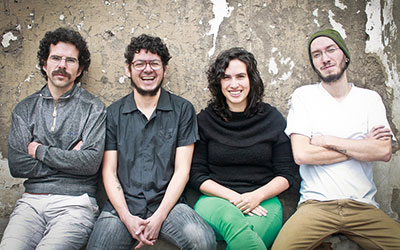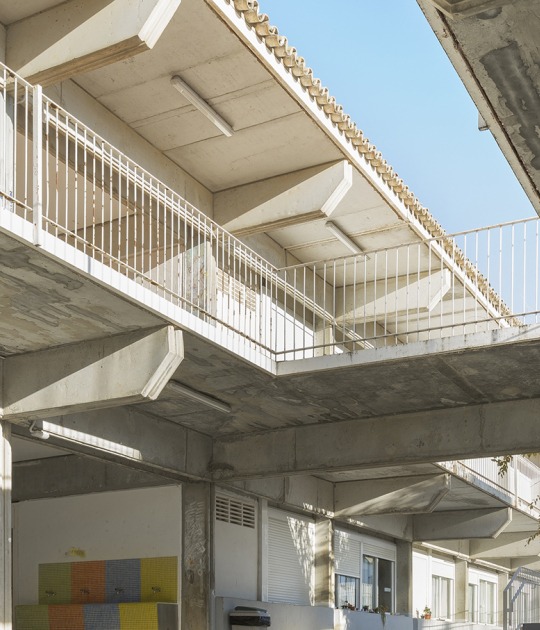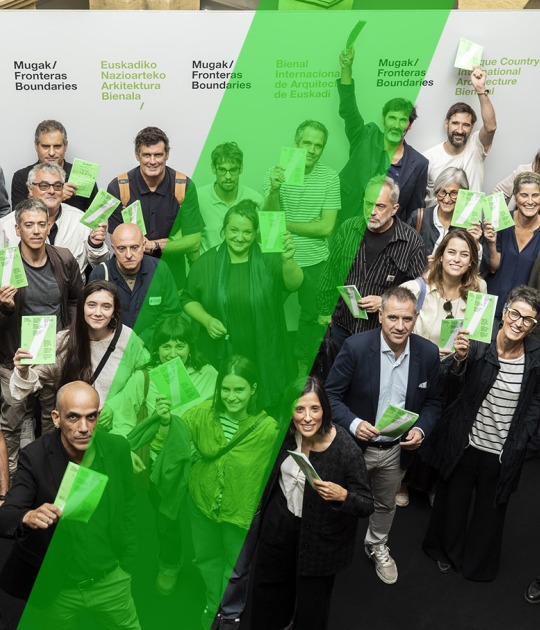Kenneth Frampton, who had already been announced as the winner of the architectural theory prize, clarified in his vote of thanks the political implications of architectural criticism. The 2012 decision in the category of the architecture prize paid tribute to this remark: Al Borde from Quito, Ecuador – a four member team that was represented by David Barragàn and Pascual Gangotena – were recognized for the deftness with which they have been able to enthuse and actively involve people in the process of building, despite all difficulties. Awarding the prize to Ecuador is coupled with the hope that the spark by which participation is generated as result from enthusiasm and not from protest might be transferred to other cultural and economic circles.
Martin Fröhlich from AFF Architekten, Berlin, and Tom Emerson from 6A Architects, London, described in their precise presentation how architecture can also mature in terms of an enrichment in concepts and in their realizations given individual and thematically defined premises in Europe, where architecture normally comes about under completely different economic, political and sociological conditions.
Already known results Schelling Architecture Prizes 2012. On 14th November 2012, there were no losers. With the new selection procedure that the Schelling Architecture Foundation had used for the first time in its 20 year history, the questions regarding the assessment of architecture, ideas and strategies were raised and defined anew in a methodical manner (see below, news item from 12th September 2012).
Three young architectural practices presented their work, the jury chosed the winner immediately afterwards. Congratulations to the winners!
Three young architectural practices presented their work, the jury chosed the winner immediately afterwards. Congratulations to the winners!
More information
Published on:
November 17, 2012
Cite:
"Schelling Architecture 2012" METALOCUS.
Accessed
<https://www.metalocus.es/en/news/schelling-architecture-2012>
ISSN 1139-6415
Loading content ...
Loading content ...
Loading content ...
Loading content ...
Loading content ...
Loading content ...
Loading content ...
Loading content ...
Loading content ...
Loading content ...
Loading content ...
Loading content ...
Loading content ...
Loading content ...
Loading content ...
Loading content ...
Loading content ...
Loading content ...
Loading content ...
Loading content ...
Loading content ...
Loading content ...
Loading content ...
Loading content ...
Loading content ...
Loading content ...
Loading content ...
Loading content ...
Loading content ...
Loading content ...
Loading content ...
Loading content ...
Loading content ...
Loading content ...
Loading content ...
Loading content ...
Loading content ...
Loading content ...
Loading content ...
Loading content ...
Loading content ...
Loading content ...
Loading content ...
Loading content ...
Loading content ...
Loading content ...
Loading content ...
Loading content ...
Loading content ...
Loading content ...
Loading content ...
Loading content ...
Loading content ...
Loading content ...




























